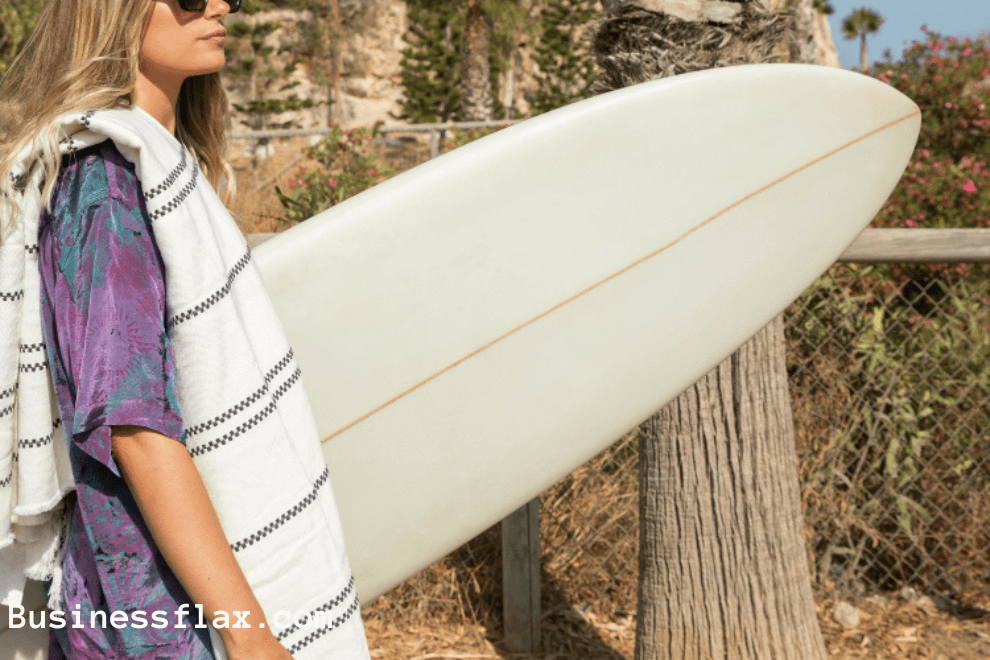How to Select a Surfboard Based on Your Local Wave Conditions

Surfing is one of the exhilarating sports for ocean game lovers. It offers both challenges and thrill.
However, the experience largely depends on the surfboard you use, which should be made to the specific wave conditions of your local surf spots.
The right surfboard will not only enhance your performance but also add more enjoyment to the activity.
In this guide, you’ll understand how to choose the perfect surfboard based on your local wave conditions to make the most of your time on the water.
First, understand the wave conditions
Before selecting the surfboard, you’ll first need to understand the various wave conditions you might encounter, such as wave size, shape, power, and consistency.
Small waves from 1 to 3 feet differ greatly from medium (3 to 6 feet) and large waves (6 feet and above). Each wave size requires different surfboard characteristics. The shape of the wave, whether it’s mushy, hollow, or somewhere in between, also affects the type of surfboard that will perform best.
Wave power is another crucial factor to consider. As powerful waves break harder and faster, it requires boards that can handle the increased energy.
Types of surfboards and their best uses
There are numerous surfboards available in the market based on shape and sizes. Each board is designed for specific conditions and styles of surfing.
Shortboards, typically less than 7 feet long with a pointed nose and a thin profile, are best for medium to large, powerful waves. They are designed for high-performance surfing to offer quick turns and the ability to handle steep, powerful waves. However, they require more skill to ride effectively.
Longboards, on the other hand, are over 8 feet long. They provide stability and ease of paddling. They are ideal for cruising and performing classic maneuvers on small to medium waves. Experienced surfers prefer longboards for classic, stylish surfing, but they’re also ideal for beginners because to their steadiness.
Fish surfboards are shorter and wider than shortboards. They often come with a swallowtail design and are excellent for generating speed in weaker waves and provide a looser, more playful feel.
Funboards, also known as hybrid boards, combine elements of shortboards and longboards, typically ranging from 6 to 8 feet in length. They offer a balance of maneuverability and stability. It makes them versatile for various conditions.
Gun surfboards are designed for big-wave surfing. They feature a longer, narrower shape that provides control and stability at high speeds. Often, pros use them to tackle waves over 10 feet.
Matching surfboards to local wave conditions
You can get the right surfboard only after evaluating your local wave conditions and matching them to the board’s characteristics.
For small, gentle waves, longboards and fish surfboards are recommended. Small, gentle waves lack the power to propel shorter boards effectively. So longboards provide the paddling power and stability needed to catch these waves, while fish surfboards can generate speed in weaker surf.
Medium, consistent waves are well-suited for funboards and shortboards. For medium waves, funboards offer a balance of stability and maneuverability, which makes them ideal for surfers looking to improve their skills. Shortboards can be used by more experienced surfers to perform advanced maneuvers.
When facing large, powerful waves, shortboards and gun surfboards are the go-to options. Large, powerful waves require boards that can handle high speeds and steep drops. Shortboards offer the necessary performance characteristics, while gun surfboards are there for very large waves due to their control and stability.
Making the final decision
It’s totally okay if you’re not able to choose the perfect surfboard the first time. Selecting a surfboard is a personal journey that involves understanding both your local wave conditions and your surfing abilities.
Try different surfboards in your local conditions to get a better feel of what works best. Many surf shops offer demo boards for this purpose as well. Moreover, you can talk to local surfers and surf shop staff for guidance.
Conclusion
To get the maximum surfing experience, you need to choose the right surfboard that is suitable for your local wave conditions.
Once you understand the types of surfboards and how they match various wave conditions, you’ll be able to make decisions on your own.
When selecting, also consider your skill level, body size, and personal preferences. When in doubt, never hesitate to seek advice from experienced surfers.
Read Also: AFK Journey Tier List






